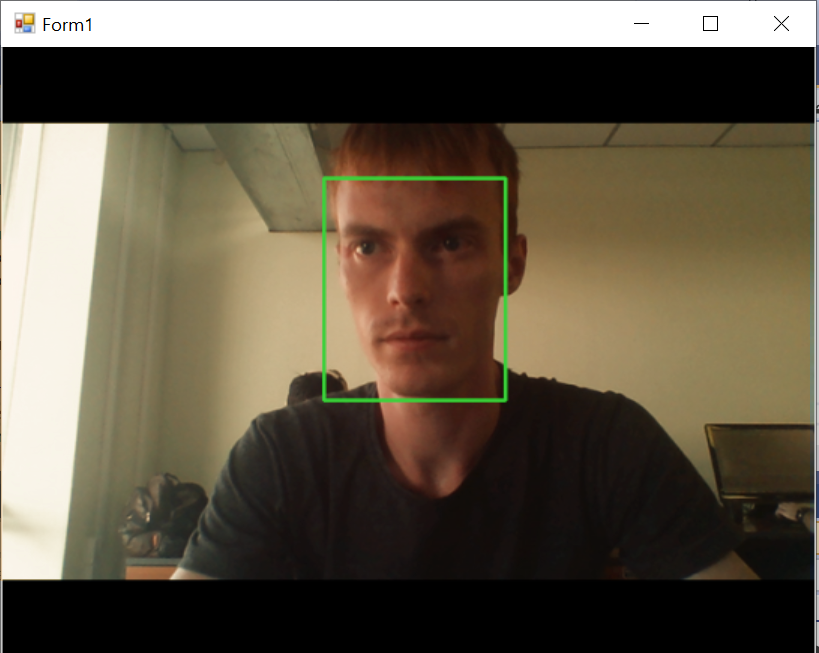Face Detection using a webcam
In this tutorial you'll learn how to detect faces in a video stream from your camera using Capturer object from Face SDK API. Detected faces are highlighted with a green rectangle.
Besides Face SDK and Visual Studio 2019, you'll need a camera connected to your PC (for example, a webcam). You can build and run this project on Windows.
You can find the tutorial project in Face SDK: examples/tutorials/csharp/FirstApp
Prepare a project
Run Visual Studio and create a new project New > Project > Windows Forms application (.NET FrameWork) > Next. Then define the name and location of our project. You'll see a Form Designer displayed in Visual Studio. Use this Form Designer to build a Windows Forms application.
Double-click the left mouse button on the form to create a new
Form1_Loadmethod in theForm1.cs.Open Build > Configuration Manager. In the combobox
Platformfield select<New...>and choose platformx64.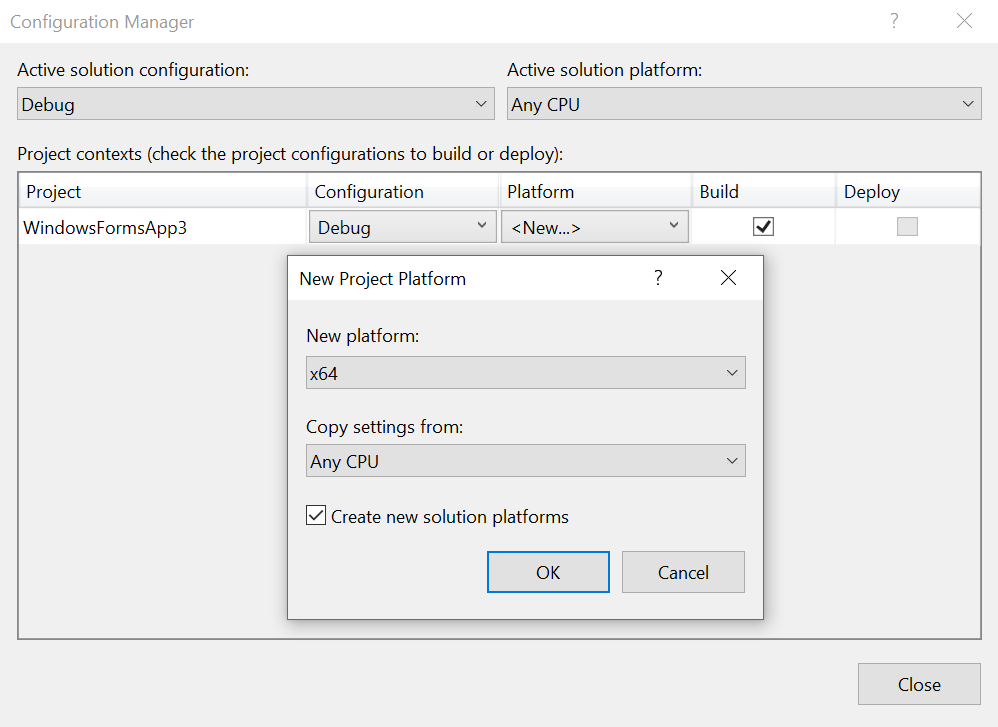
Click
OK > Close.Open the Form Designer and add the PictureBox component to the form (located in View > Toolbox > All Windows Forms). For the created
pictureBox1clickDock in parent containerand selectZoomSize Mode.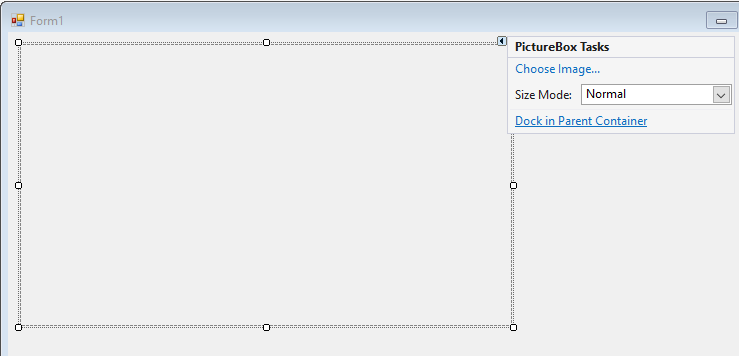
Get a video from a webcam
To work with the webcam, use the Emgu.CV, Emgu.CV.Bitmap, Emgu.CV.runtime.windows libraries. To install the package, use
NuGet Package ManagerTools > NuGet Package Manager > Manage Nuget Packages for Solution. Select theBrowsetab, find the packages and install them.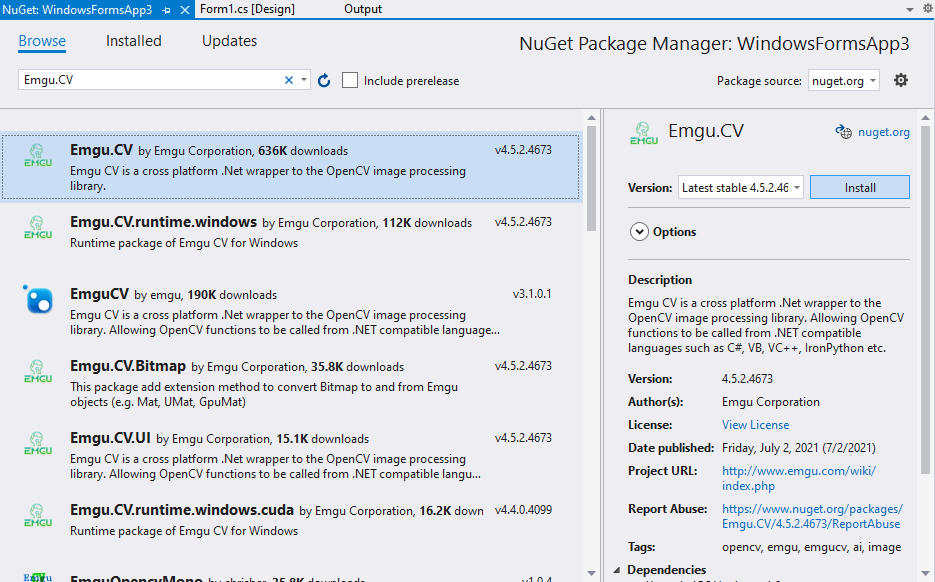
Open the
Form1.cscode editor and add imports at the beginning of the code:using Emgu.CV;
using Emgu.CV.Structure;Add the
GetFramemethod to the class and modifyForm1_Load. Also, add thecameraandcamera_idveriables with a device number:namespace FirstApp
{
public partial class Form1 : Form
{
private int camera_id = 0;
private VideoCapture camera;
...
private void GetFrame(object sender, EventArgs e)
{
Image<Bgr, byte> image = camera.QueryFrame().ToImage<Bgr, byte>();
pictureBox1.Image = image.ToBitmap();
}
private void Form1_Load(object sender, EventArgs e)
{
camera = new VideoCapture(camera_id);
if (camera.IsOpened)
{
Application.Idle += GetFrame;
}else
{
MessageBox.Show("Camera not opened!", "Camera error", MessageBoxButtons.OK, MessageBoxIcon.Error);
Application.Exit();
}
}
...
}
}Now build and start Build > Run Code Analysis on Solution program and make sure that the video from the camera is displayed.
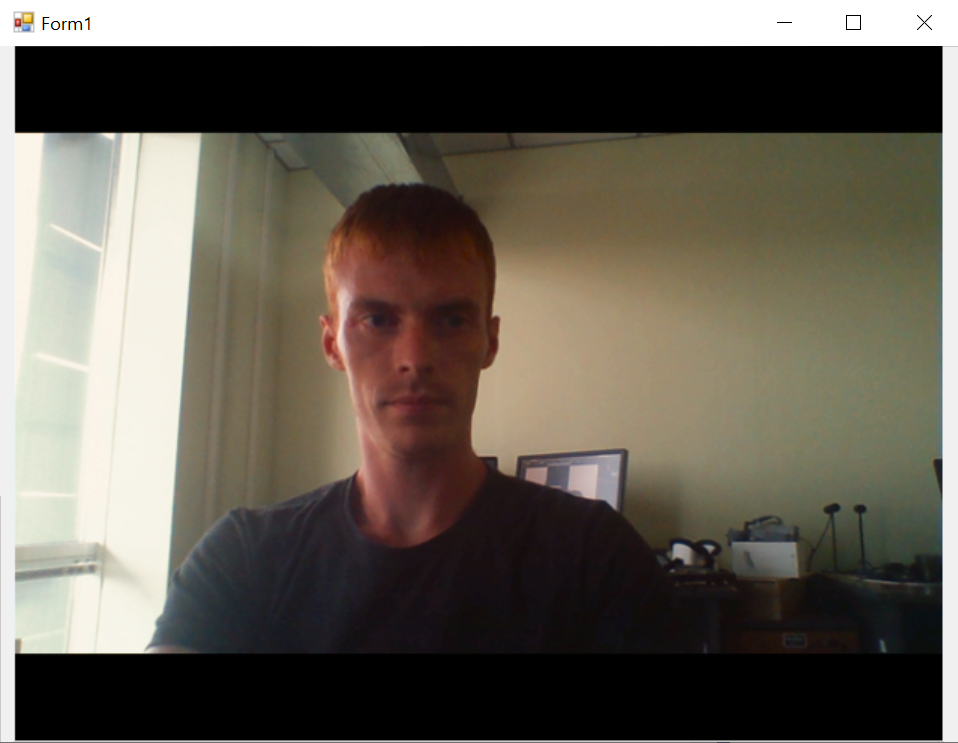
Add FaceSDK to a project
Open View > Solution Explorer > References (right-click) > Add Reference -> Browse and add
FacerecCSharpWrapper.dllfrom<facesdk_root_dir>\binfolder. ClickOK.To automatically copy libraries into your project, open Project > {PROJECT_NAME} Properties... > Build Events > Edit Pre-build... and add lines:
set facesdk_root_dir=<facesdk_root_dir>
xcopy /Y "%facesdk_root_dir%\bin\facerec.dll" "$(TargetDir)"
xcopy /Y "%facesdk_root_dir%\bin\sense4.dll" "$(TargetDir)"
xcopy /Y "%facesdk_root_dir%\bin\tensorflow.dll" "$(TargetDir)"Note: replace
<facesdk_root_dir>with the path where the installed FaceSDK is located.
Click
OK.In
Form1.csadd imports at the beginning of the code:using System.Runtime.InteropServices;
using VDT.FaceRecognition.SDK;Add private variables into
Form1class:private String faceSDKRootDir = "<facesdk_root_dir>";
private Capturer capturer;Note: replace
<facesdk_root_dir>with the path where the installed FaceSDK is located.Before the
Application.Idle ...line, add the creation of Face SDK service and the capturer to theForm1_Loadmethod:private void Form1_Load_1(object sender, EventArgs e)
{
...
if (camera.IsOpened)
{
FacerecService service = FacerecService.createService(faceSDKRootDir + "\\conf\\facerec", "");
FacerecService.Config capturerConfig = new FacerecService.Config("fda_tracker_capturer_uld.xml");
capturer = service.createCapturer(capturerConfig);
Application.Idle += GetFrame;
}
else
...
}Finally, add a
drawDetectionsmethod that will detect the face in the image and draw a frame around the face.private void GetFrame(object sender, EventArgs e)
{
Image<Bgr, byte> image = camera.QueryFrame().ToImage<Bgr, byte>();
drawDetections(image);
pictureBox1.Image = image.ToBitmap();
}
private void drawDetections(Image<Bgr, byte> image)
{
Mat frame_m = image.Mat.Clone();
byte[] data = new byte[frame_m.Total.ToInt32() * frame_m.NumberOfChannels];
Marshal.Copy(frame_m.DataPointer, data, 0, (int)data.Length);
RawImage ri_frame = new RawImage(frame_m.Width, frame_m.Height, RawImage.Format.FORMAT_BGR, data);
List<RawSample> detected = capturer.capture(ri_frame);
foreach (RawSample sample in detected)
{
RawSample.Rectangle rect = sample.getRectangle();
image.Draw(new Rectangle((int)rect.x,
(int)rect.y,
(int)rect.width,
(int)rect.height),
new Bgr(0, 255, 0),
2);
}
}Now you can launch the application and check how it works.
